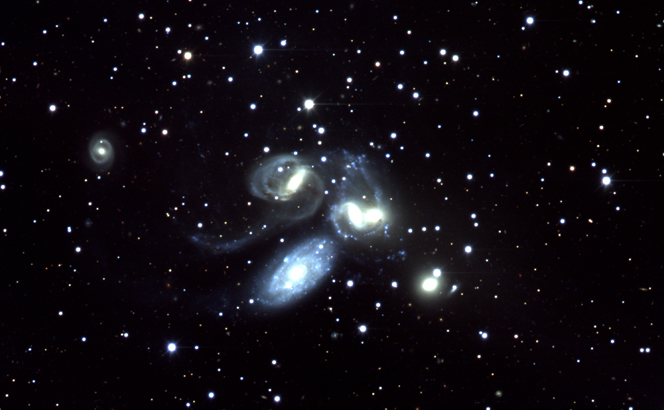Astronomy involves much more than peering through a telescope, but with some telescopes the opportunity can be a memorable one.
That’s why Northern Arizona University junior Brian Barandi wanted to be sure his fellow undergraduate students in an observational astronomy class made the most of a “huge opportunity” to find objects with the Discovery Channel Telescope.
“It was a chance to see what a telescope of that caliber looks like,” Barandi said. “I wanted to make sure we didn’t lose any time.”
Barandi, back at NAU after an eight-year break, offered to coordinate three half-night visits to one of the largest telescopes in the United States when instructor Philip Massey offered up three half-nights of his own valuable viewing time.
In the end, 21 students viewed nine far-flung objects and gained a new appreciation for big-time astronomy.
“It was pretty amazing,” Barandi said. “It’s hard to understand the scale of the telescope until you see it in person.”
The confluence of two NAU connections made the hands-on experience possible. In December 2013, the university signed an agreement that provided 80 nights of NAU observation time on the highly valued research tool. And Massey, a professional astronomer at Lowell Observatory who lectures at NAU, has his own time on the Discovery Channel Telescope.
During the half-nights at the telescope, students put into practice what they had been learning in the classroom: astronomy entails gathering immense amounts of raw data, making a few sound guesses and generating, ultimately, the prize of a spectacular image.
Once the telescope operator uses coordinates to point the telescope at the desired object, the real work comes into play. “We had to decide what color filters to use, the exposure times and how many exposures to take,” Barandi said. “So we took a ballpark guess on the first exposures and fine-tuned from there.”
The object Barandi sought was Stephan’s Quintet, a cluster of five galaxies, four of which are interacting with one another. Producing an image reinforced one of his primary motivations for pursuing astronomy and physics as a field of study.
“It’s amazing that we can look at something in the universe and be able to tell all these details about it without ever leaving the planet,” he said.
And astronomy is very much about details. Over the summer, Barandi participated in the Research Experience for Undergraduates program by working with spectroscopic data from about 700 red supergiant stars in the large and small Magellanic clouds, part of another Massey project. Massey had generated the data from the Anglo-Australian telescope in Australia.
“When you are sent raw data from a telescope, you have to perform reductions—multiple processes that turn it into usable data,” Barandi said. Even with a bundle of algorithms and specialized software, Barandi is still sorting and classifying. And he will be doing a lot more. Recently awarded a NASA Space Grant, he will work with another Lowell astronomer, Deidre Hunter, to process data from a survey of star-forming regions in dwarf galaxies.
There may be another payoff from that project.
“She has some time on the telescope, so I’m hoping I can make a couple of observations,” Barandi said.



